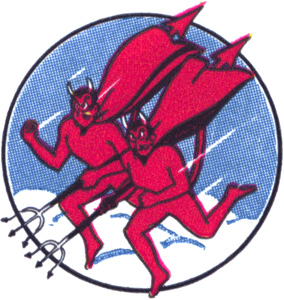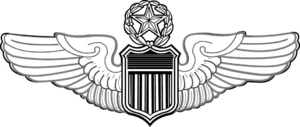Richard G. Candelaria facts for kids
Quick facts for kids
Richard Gomez Candelaria
|
|
|---|---|
 |
|
| Born | July 14, 1922 El Paso, Texas, U.S. |
| Allegiance | |
| Service/ |
United States Army Air Forces |
| Years of service | 1943–1964 |
| Rank | |
| Unit | 479th Fighter Group |
| Commands held | 8195th Replacement Training Squadron |
| Battles/wars | World War II |
| Awards | Silver Star Distinguished Flying Cross Purple Heart Air Medal (8) |
Richard Gomez Candelaria, born on July 14, 1922, is an American flying ace. This means he was a military pilot who shot down five or more enemy aircraft in air combat. He flew with the 479th Fighter Group during World War II. He is known for shooting down six enemy planes, including a fast Messerschmitt Me 262 jet.
Contents
Early Life and Dreams of Flying
Richard Candelaria was born in El Paso, Texas. He was seven years old when his father passed away. His grandmother, aunts, and uncle moved in with his family in Southern California. They lived comfortably even during the Great Depression, a tough economic time.
After finishing high school in Fresno in 1939, Richard wanted to become a pilot. He passed the first tests for the Air Force flying program. To meet the college requirement, he studied at the University of Southern California. He also worked part-time at a company that made aircraft instrument dials. This kept his interest in aviation strong.
Military Service and World War II Missions
Richard Candelaria joined the U.S. Army Air Forces in January 1943. He trained at airfields in California and Arizona. In January 1944, he became a second lieutenant and earned his pilot wings.
He then became a flight instructor at Williams and Luke Fields in Arizona. He taught other pilots how to fly using instruments and how to shoot accurately.
Flying in World War II Combat
In May 1944, Candelaria asked to be sent to combat. After learning to fly the P-51 Mustang, he joined the 435th Fighter Squadron in England in September 1944. His base was RAF Wattisham. He flew P-38 Lightnings and P-51 Mustangs. His main job was to protect B-24 Liberators (large bomber planes) from enemy attacks.
On December 5, 1944, he was flying near Berlin. His squadron met about 80 German Focke-Wulf Fw 190 planes. These enemy planes were trying to attack a group of B-24 bombers. Candelaria's P-51s attacked. He shot down two Fw 190s, making the other German planes scatter and fly away.
His most exciting day was April 7, 1945. Candelaria was getting ready to take off when he learned his plane had a flat tire. The ground crew quickly fixed it. By the time he was in the air, the rest of his group had already left.
He flew a shortcut to the target area. He saw two jet-powered Messerschmitt Me 262s waiting to attack the B-24s. Candelaria flew close to the jets. As they dipped below him, he dropped his fuel tanks. He hoped to hit one of them, but it didn't happen. However, this move distracted the German pilots. As they started to circle, Candelaria turned his P-51 sharply. He got inside their wide turn and fired at one Me 262. The jet started to smoke and roll over. The other Me 262 tried to attack Candelaria but then flew away.
Right after this, Candelaria saw several Messerschmitt Bf 109s trying to attack the B-24s. He called his squadron for help. He then shot down the lead Bf 109. Candelaria went after the other German fighters. He shot down three more before his squadron finally arrived. The remaining Bf 109s then retreated.
Shot Down and Escape
On April 13, 1945, after a mission over East Prussia, Candelaria attacked enemy aircraft at an airfield in Rostock. He made a second pass over the airfield. This time, German anti-aircraft guns fired at him. His plane's engine caught fire. Candelaria steered his plane toward the Elbe River to get to Allied-controlled land. He then parachuted out of his P-51.
He spent several days trying to escape. He was moving through a field when two German soldiers appeared. Candelaria tried to surrender, but they shot at him. He defended himself and continued to evade capture.
After two more days, weak from hunger, he found a vacant cabin near a village. Locals saw him and approached the cabin with a German army sergeant. They were angry because Allied planes had attacked their village. The sergeant protected Candelaria until an officer arrived. Candelaria was then taken to a Luftwaffe command center where other Allied pilots were held.
After several weeks, Candelaria and two British officers managed to escape. They took a German captain hostage and used a German car to reach Allied lines. They crossed into Belgium and were surprised to learn that the war in Europe was over. Candelaria safely returned to his squadron and later to the United States.
During World War II, Candelaria was officially credited with destroying 6 enemy aircraft in air battles. He also probably destroyed one more. He flew a P-51K plane he called "My Pride and Joy."
After the War
Candelaria left active duty in May 1946. He served in the Air Force Reserve and later joined the California Air National Guard. He held many leadership roles over the next ten years. He retired on June 15, 1964, as a colonel.
Life After Military Service
Richard Candelaria married Betty Jean Landreth in 1953. They have two daughters.
After leaving the military, Candelaria had a successful business career. He started several manufacturing companies and worked in management.
In 2007, Candelaria appeared on the History Channel show Dogfights. The episode was called 'P-51 Mustang'. It showed his famous mission from April 7, 1945. The show used computer graphics to recreate historical air battles.
Planes Shot Down
Richard Candelaria was a skilled pilot. Here are the enemy planes he shot down:
| Date | Location | In Air/On Ground | Number | Type of Plane | Result |
|---|---|---|---|---|---|
| December 5, 1944 | Berlin, Germany | Air | 2 | Fw 190 | Destroyed |
| April 7, 1945 | Lüneburg, Germany | Air | 1 | Me 262 | Probable |
| April 7, 1945 | Lüneburg, Germany | Air | 4 | Bf 109 | Destroyed |
-
-
-
- SOURCE: Air Force Historical Study 85: USAF Credits for the Destruction of Enemy Aircraft, World War II
-
-
Awards and Honors
Richard Candelaria received many awards for his bravery and service. Some of his most important awards include:
- Silver Star: A high award for bravery in combat.
- Distinguished Flying Cross: Given for heroism or amazing achievements while flying.
- Purple Heart: Awarded to service members wounded or killed in action.
- Air Medal: Given for heroic or outstanding achievements while flying. He received this eight times.
- Air Force Presidential Unit Citation: Awarded to units for extraordinary heroism in action.
- Prisoner of War Medal: For those who were prisoners of war.
- World War II Victory Medal: For serving during World War II.
- French Legion of Honour (Chevalier): A very high honor from France.




